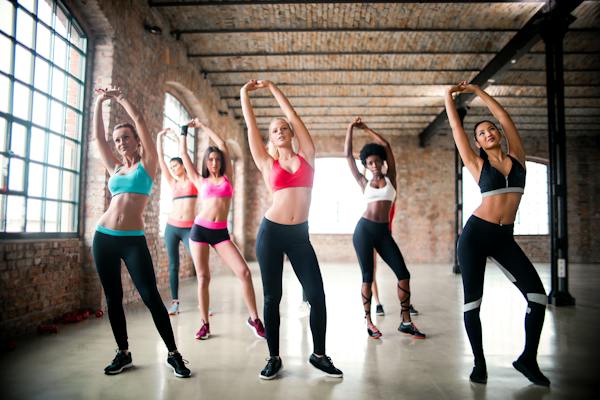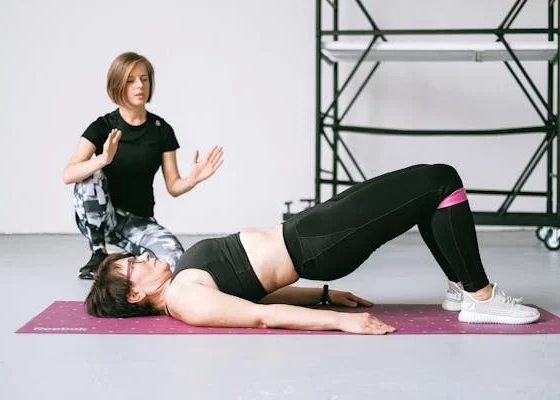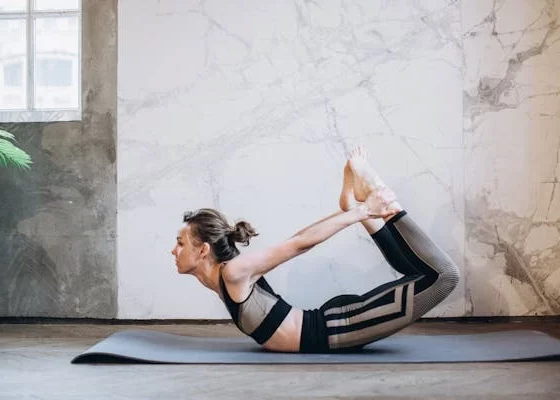Living a healthy lifestyle in a hectic world is challenging, resulting in physically unfit and unconfident individuals. Maintaining a flat belly and curvy hips is a tricky dream for most women, especially after giving birth, leading to comparison and endless pursuit of the standard physicality. Yet, some dances, like belly dancing, existed not just for cultural purposes but for fitness to help women achieve their body goals. This article will delve into the history and some Belly Dancing Tips, which is significant in fitness, sculpting most women’s desired hips and bellies.
What is Belly Dancing?
It is an age-old form of allure, an irresistible allure characterized by the flowing motion of hands resembling serpents or ribbons in the air, swaying hips, rippling torso, and precise isolations used to convey various dynamic and emotional messages. This rhythmic dance speaks its unique language.
Belly dance, known as “raqs sharqi” in the East, is referred to as Oriental dance in Europe and “oriental dance” in Turkish.
While the precise origins of this dance form remain uncertain, it is believed to have evolved from ancient Egyptian dances and religious rituals performed by Temple Priestesses. Additionally, it may have been part of traditional birthing ceremonies and spread through migrations of Roma and related groups. Despite its uncertain beginnings, belly dance boasts a long and culturally rich history and is now practiced worldwide for various purposes.
Belly dancing frequently celebrates the curvy nature of the female body, a departure from the Western ideal of flat abdomens. Its core movements often involve circular motions isolated in specific body parts, such as hips and shoulders, creating parallel circles to the floor. Accents with “pop and lock” techniques, shimmying, and dynamic hip or shoulder movements are familiar. Additionally, belly dancing showcases feats of flexibility and intricate belly muscle rolls and engages muscles throughout the entire body.
History of Belly Dancing:
The origins of belly dancing trace back across diverse cultural landscapes, originating in the Middle East and Africa before evolving into Western cultures as a cultural dance and exotic entertainment form. In the 21st century, its popularity has surged globally.
-
Early Belly Dancing History
“Belly dance” originally denoted traditional Middle Eastern dancing but has become a Westernized term. The origins of belly dance trace back to various forms, including the Egyptian Ghawazi dance, which dates back to the 19th century, and Raqs Sharqi, an Arabic dance originating in the 20th century. Despite Egypt’s African roots and its fusion with cultural elements from France, Turkey, and the United States, the term “belly dance” now encompasses all traditional dances of the Middle Eastern region, irrespective of their geographic origins.
-
Origins in Egypt
The original belly dancers, known as the ghawazee, were a traveling group of dancers in Egypt during the 18th century. They were considered gypsies and subsequently expelled from Cairo in the 1830s. Despite this, they continued performing in Upper Egypt, the Middle East, and eventually Europe. Referred to as “Oriental” dancing during that era, these women gained fame in Europe due to the fascination of authors and painters with the exoticism of the art form.
The raqs sharqi style of belly dancing emerged from the ghawazee ensemble, characterized by its urban flair compared to earlier forms. Incorporating inspiration from the ghawazee and various folk dances, ballet, Latin dance, and even American marching bands, raqs sharqi quickly rose to prominence. In the 1960s and 1970s in the United States, belly dancing surged in popularity, coinciding with increased female empowerment. Despite its sensual reputation, Western women sought to redefine it as a dance celebrating femininity. It was often performed in connection with female rites of passage, such as childbirth and new-age Goddess worship.

Choreography of Belly Dancing Through the Ages:
Although belly dancing is renowned for its striking style and elaborate costumes, mastering its basic techniques requires precise isolation skills. Individuals with a background in jazz or ballet often excel in learning these fundamentals. Central to the dance are the core muscles, which orchestrate each movement, emphasizing the integration of internal muscle groups. While the hips and pelvis primarily drive the dance, fluid performances also incorporate isolations of the shoulders and chest.
Starting position:
- Stand with your feet parallel, directly under your hips.
- Keep your knees slightly bent.
- Maintain a slightly tucked or neutral pelvic position, with your chest lifted, stomach muscles engaged, and shoulders relaxed.
- Picture your head as a balloon floating on a string.
- Imagine your core located at your solar plexus, and envision your arms as if they are resting in “heavy water” to facilitate fluid movements.
The 3 Basic Steps of Belly Dancing:
Among the diverse steps in belly dancing styles worldwide, several classic movements reappear across different periods, like the three following steps:
-
Shimmy:
Utilizing the lower back muscles, the hips vibrate in a front-to-back or side-to-side motion, occasionally extending to the shoulders.
A sped-up motion characterized by sliding or twisting movements can involve the hips or shoulders. Shimmies come in numerous variations, including stationary and traveling forms.
Now, let’s practice the “walking hip shimmy.” Begin by keeping your knees deeply bent to prepare. Recall the hip lifts we practiced earlier—lift one hip at a time, focusing on feeling the movement in your obliques rather than solely relying on knee movement. Maintain a lifted chest and engage your lower abs throughout. Lift one heel off the floor while keeping the shimmy consistent and balanced. Alternate sides, lifting the opposite heel while maintaining the shimmy’s integrity.
You can lightly touch the raised foot to the ankle of the opposite leg or let it hover in front. Step back together and try the other side. Lift the foot off, extend forward, and keep the shimmy relaxed and continuous. Now, let’s add music. Lift the right heel, take a step, lift the left heel, and then lift the foot again. Keep the shimmy consistent as you travel backward with a lifted chest and energized arms. Let’s try a slightly faster pace, maintaining the relaxed shimmy. And that’s how you perform the walking hip shimmy!
-
Undulations:
Undulation is a fluid, rolling motion that can engage the abdomen alone or the entire torso. A stationary stomach undulation, also known as a belly roll, utilizes only the abdominal muscles without involving the chest, whereas the full torso undulation incorporates both. During traveling undulations, the entire torso is typically engaged, resulting in a graceful, gliding movement where the chest lifts and rolls into a stomach roll as the feet move, often described as a smooth arch or contraction, akin to the “camel” moves.
Characterized by flowing, fluid motions across the body, undulations involve rhythmic chest pulsations and circular twists of the hips and abdomen.
-
Hip hits:
A hip bump, referred to as a “hit,” involves the hip moving outward to the side and upward simultaneously.
These movements feature sharp and rapid hip pulsations outward from the body, creating the illusion of swinging hips through swift leg weight alternations.
Hip lifts involve movements where the hip rises and falls while the leg and foot of the active hip remain slightly extended, with no weight on the “working hip” leg; instead, the weight is borne by the supporting leg at the back. In a hip lift, the hip ascends on the accent of the beat, while in a hip drop, it descends on the beat’s accent.
Figure 8 motions encompass isolations where a body part, typically the hips, follows a continuous figure 8 (infinity loop) trajectory. In a Horizontal Figure 8, the hip smoothly twists front and back on a parallel plane, with one hip forward and the other backward, maintaining continuous motion.
Meanwhile, a Vertical up Figure 8 (Hipovers) involves raising the hip with weight on the opposite leg, moving it inward and downward, and centering the weight before lifting the other hip similarly. Lastly, a Vertical down Figure 8 (Mayas) consists of lifting the hip with weight on the same leg, pushing it outward and downward before bringing it inward to the center, repeating the sequence with the other hip.
Costuming and Props History:
In its early days, belly dancing attire typically comprised a snug bra top, a hip-slung belt, and a lengthy skirt or flowing trousers adorned with fringe, coins, jewels, or sequins—an iconic ensemble preserved from its historical origins.
The rich tapestry of belly dancing history also features an array of props embraced worldwide. While American belly dancers often incorporate these to enhance entertainment value, traditional studios may prioritize the dance’s physical discipline and artistic expression over props. Standard props in entertainment-focused venues include fans, finger cymbals, tambourines, swords, snakes, canes, and veils or lightweight scarves. However, their use remains optional and subject to the choreographer’s and dancer’s discretion.

Belly Dancing Tips Towards Fitness:
As one of the most ancient dance forms, belly dance offers many benefits, including enhanced balance, strength, digestion, coordination, and self-assurance. Not only is belly dancing enjoyable and deeply expressive, but its health advantages are often overlooked, making it a genuinely empowering and rewarding experience. Here are five ways belly dancing can positively impact you:
Enhance Strength and Muscle Tone
Belly dancing engages vital muscles like the glutes, obliques, and quads, promoting muscle toning and strength. Its intricate movements target internal muscle anatomy, offering a workout that feels more like an artistic expression than exercise.
Belly dance workouts offer excellent stomach exercises. If you’re tired of dealing with flab in this area, consider trying this dance form. You’ll undoubtedly enjoy yourself while shedding belly fat in no time.
Boost Confidence
Through improved body image and muscle tone, belly dancing naturally elevates confidence. The dance triggers the release of endorphins and dopamine, fostering a sense of well-being and accomplishment. As you master movements, you’ll feel inclined to showcase your newfound skills proudly.
Improve Balance and Posture
Belly dancing integrates postures akin to Yoga and Pilates, enhancing spine, knee, and pelvic alignment. By conditioning the back, knees, and pelvis, the dance cultivates proper stance for movement execution while reducing stress and tension. This promotes flexibility and minimizes injury risks, allowing you to move gracefully and effortlessly.
Foster Social Connections
Belly dance classes offer an opportunity to forge new friendships with like-minded individuals from diverse backgrounds. Sharing the dance journey and hearing others’ stories fosters emotional connections and enriches the learning experience, creating a supportive and inclusive community.
Promote Relaxation
Belly dancing can be a meditative experience, especially during the calming ‘cool-down’ segment accompanied by enchanting music. It provides a feminine form of exercise that allows for deep expression and ritualistic relaxation. After a demanding day, the serene atmosphere of a belly dance class helps center the mind and rejuvenate the spirit, leaving you eager for more.
Experience the vibrant and exotic world of belly dancing, where you’ll discover excitement and color in this unique dance form. It’s guaranteed to be a new and thrilling experience for you!
Belly dancing contributes to your overall fitness by enhancing your dancing skills and building strength. It’s an opportunity to cultivate patience, especially if you’re learning new steps, and it can also improve coordination.
Beyond its fitness benefits, belly dancing embodies a shared understanding among practitioners of the female experience and the empowering desire for self-expression through movement. It feels akin to discovering a poetic voice, unlocking new realms of physical expression, or gaining the freedom to soar like wings. Belly dancing represents a liberation toward a profound, personal, and joyous engagement with life.
Conclusion:
Belly Dancing is an excellent avenue for maintaining fitness, boosting confidence, and nurturing overall health, regardless of the dance background. This dance is very purposeful as it can serve for entertainment and physical fitness.



